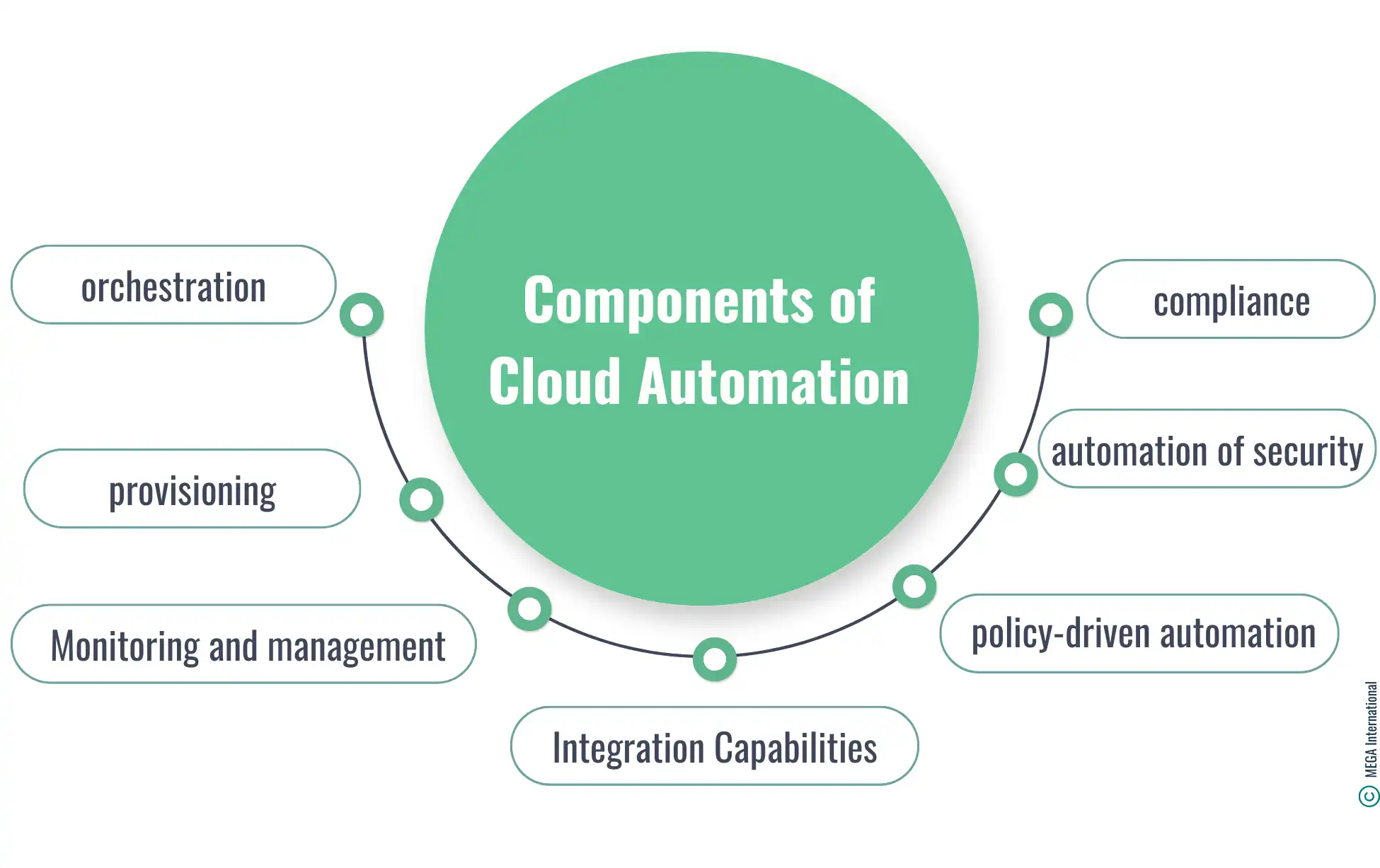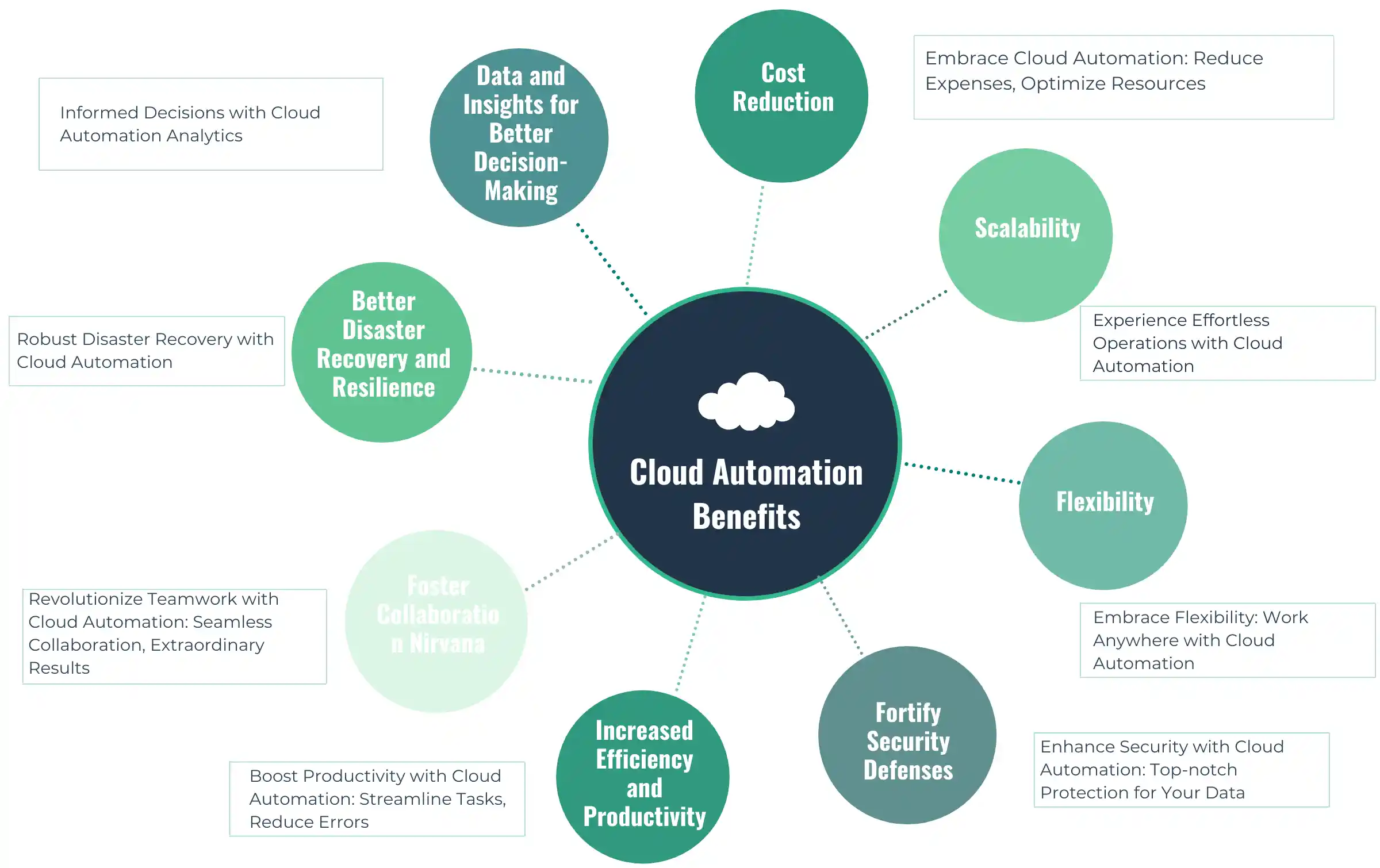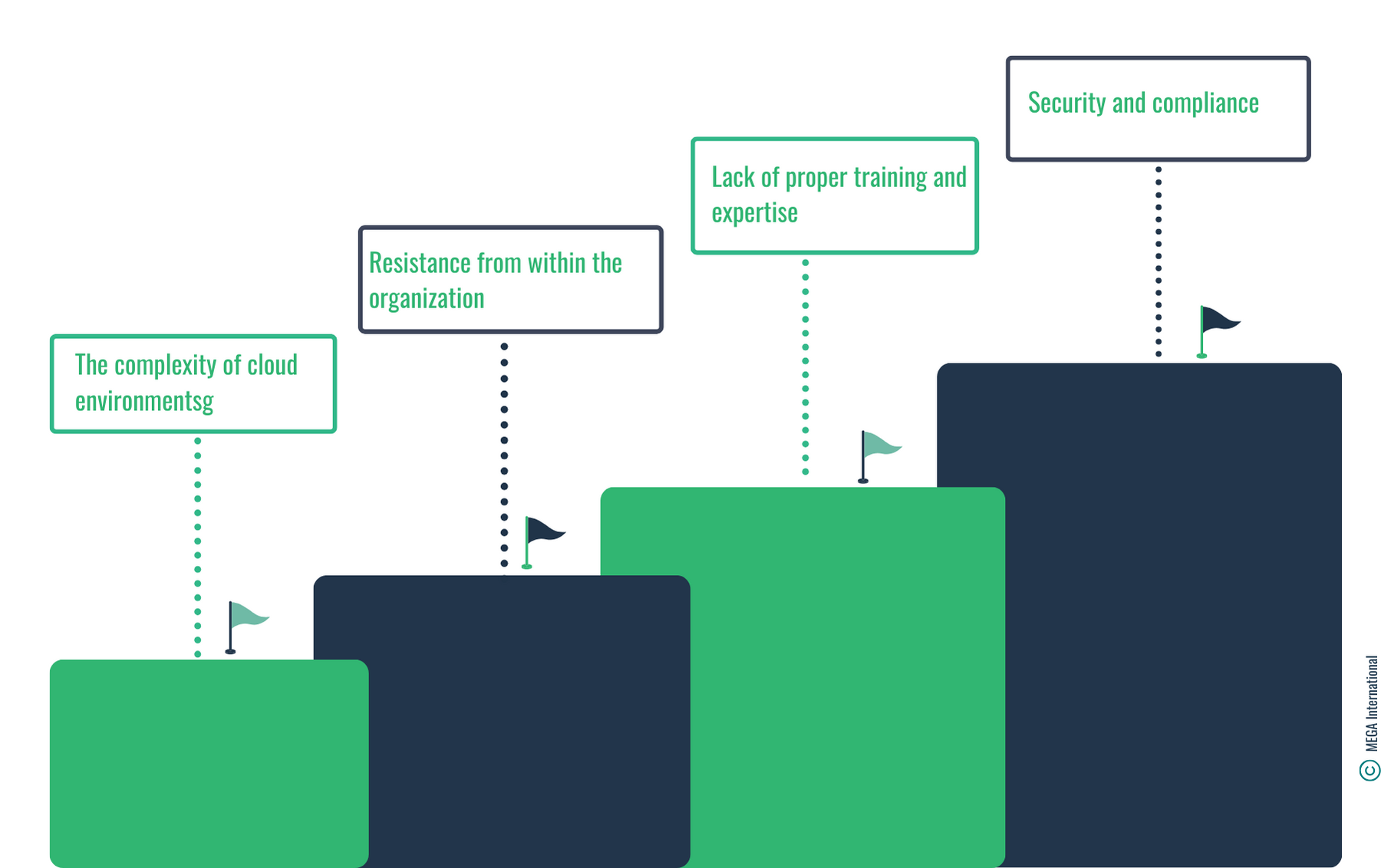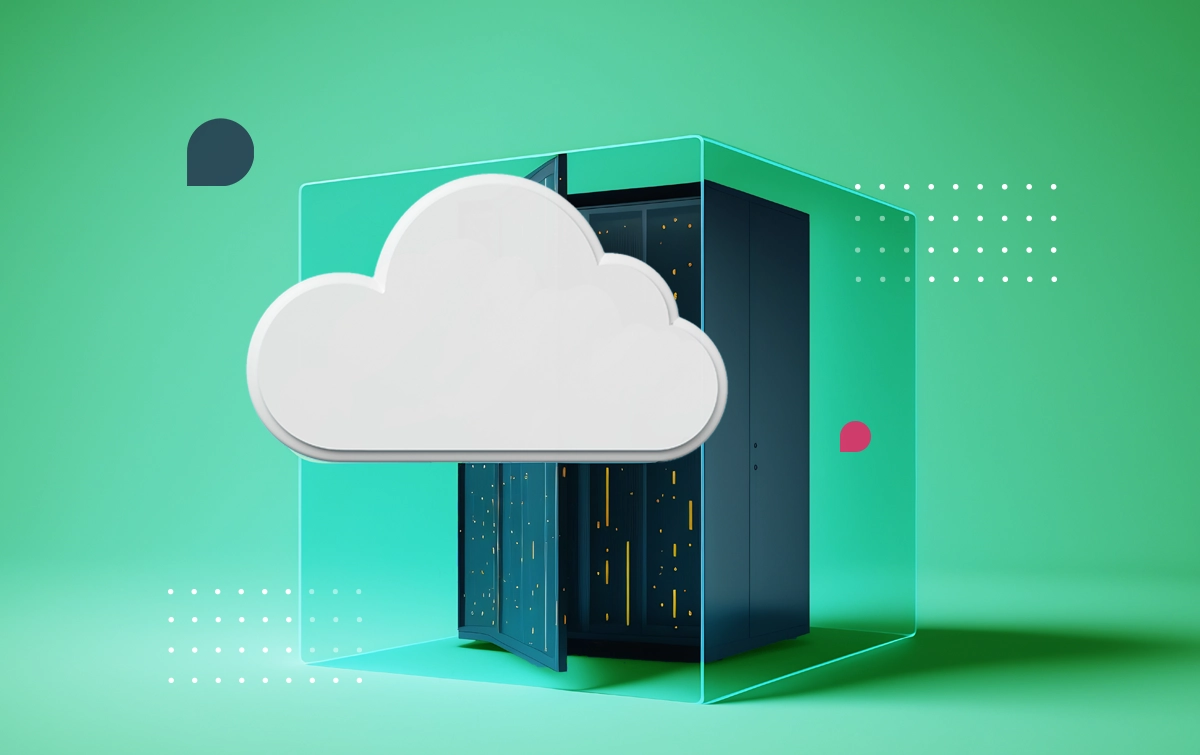
Cloud Automation: Streamlining Your Cloud Operations
Cloud automation is the future, and it's transforming how we think about data management and service delivery. With its dynamic capabilities, businesses are unlocking potentials they never knew existed.
The Evolution of Cloud Computing
The Early Days
Remember the days when data storage meant bulky servers in a room? The cloud changed all that, but it was just the beginning.
The landscape of this time was charged with a mix of optimism and skepticism. Armed with vision and determination, Pioneers in the field pushed against the tide of traditional computing, advocating for a more flexible, scalable, and efficient approach. There was a palpable sense of adventure and exploration as these trailblazers ventured into uncharted territory, laying the groundwork for what cloud computing would become.
Recent Advancements
Now, we're not just storing data in the cloud; we're witnessing an awe-inspiring evolution, a journey that has taken us far beyond the rudimentary concepts of data storage and basic computing tasks. The cloud has become a vibrant, dynamic ecosystem, pulsating with innovation and possibilities that once felt like mere science fiction.
What is Cloud Automation, and How Does it Work?
In defining cloud computing, we touch upon something profoundly transformative, a concept that has redefined how we interact with technology.
Cloud automation uses software tools and technologies to automate the management and deployment of cloud workloads and resources. It involves using scripts and other automation tools to perform repetitive tasks, reducing manual intervention and enhancing operational efficiency.
Critical Components of Cloud Automation

The first key component of cloud automation is orchestration, which involves coordinating and managing multiple tasks and workflows. With orchestration, you can streamline and automate complex processes, allowing for more efficient use of resources and time.
Another critical component is provisioning, the automated setup, and deploying resources and services in the cloud. By automating provisioning, you can quickly scale your infrastructure up or down as needed, saving valuable time and reducing the risk of human error.
Monitoring and management also play a vital role in cloud automation, allowing for continuous tracking and optimizing cloud resources. By automating monitoring and management, you can ensure the performance and availability of your cloud services, proactively addressing any issues before they become critical.
Integration Capabilities. The beauty of cloud automation lies in its ability to integrate with various tools and systems. This integration creates a harmonious ecosystem where different applications and services work together seamlessly, like other instruments in an orchestra, each adding its unique note to the melody.
Additionally, policy-driven automation is another critical component, enabling the enforcement of governance and compliance standards across the cloud environment. By automating policy enforcement, you can reduce the risk of security breaches and ensure regulatory compliance without manual intervention.
Furthermore, automation of security and compliance checks is essential for maintaining a secure and compliant cloud infrastructure. By automating security and compliance checks, you can consistently enforce best practices and reduce the risk of vulnerabilities and non-compliance.
READ: Cloud it Modernization
Lastly, automation of backups and disaster recovery processes is essential for data protection and business continuity in the cloud. By automating backup and disaster recovery, you can quickly recover from any data loss or system failure, minimizing downtime and ensuring the integrity of your business operations. Understanding and implementing these critical components of cloud automation is essential for achieving cloud efficiency, scalability, and resilience.
The Benefits of Cloud Automation
Transitioning to cloud automation can bring many exciting benefits that can skyrocket your business's success. Let's dive into the incredible advantages that await you:

Cost Reduction
Embrace the power of cloud automation and watch your expenses shrink. Say goodbye to hefty hardware and software costs, as well as the headaches of maintenance. With streamlined operations and optimized resource utilization, you'll witness significant financial savings that can be reinvested into other business areas.
Scalability
Imagine effortlessly expanding or contracting your operations based on demand, just like magic. With cloud automation, this dream becomes a reality. Seamlessly provision or de-provision resources and adapt to changing market dynamics with unparalleled ease. Scale up for busy periods and scale down when things quiet down, all while keeping your costs in check.
Flexibility
Break free from the chains of traditional office setups and embrace a new era of flexibility. Cloud automation empowers you and your team to work from anywhere, anytime. Access your applications and data remotely, collaborate effectively, and achieve that perfect work-life balance we crave. The possibilities are endless!
Fortify Security Defenses
In an increasingly digital world, security is paramount. You can access cutting-edge technology and industry-leading security measures by transitioning to cloud automation. Rest easy knowing that robust protocols, top-notch encryption, and ironclad authentication mechanisms safeguard your valuable data and infrastructure.
Increased Efficiency and Productivity
Free up precious time and supercharge your team's productivity. Cloud automation takes care of those mundane, repetitive tasks that waste your resources. From automated backups to seamless software updates and system monitoring, you'll witness a surge in operational efficiency and a dramatic decrease in human errors.
Foster Collaboration Nirvana
Break down barriers and revolutionize teamwork with cloud automation. No matter where your team members are located, they can collaborate seamlessly. Share files, documents, and ideas in real-time, boosting creativity and enhancing productivity. Together, you'll achieve extraordinary results.
Better Disaster Recovery and Resilience
Bid farewell to sleepless nights worrying about data loss or catastrophic system failures. Cloud automation provides robust disaster recovery capabilities that will make you feel invincible. Your critical business data and applications are securely stored in the cloud, ready for rapid recovery should the unexpected occur.
Data and Insights for Better Decision-Making
Cloud automation tools often come with analytics and reporting capabilities. These insights allow businesses to understand their cloud usage and performance better, leading to more informed decisions about IT infrastructure and strategy.
Cloud Automation vs. Traditional IT Management
Cloud automation and traditional IT management are two approaches to managing and maintaining IT infrastructure and services within an organization. While both aim to support business operations, they differ in several key aspects. Let's explore the differences between cloud automation and traditional IT management.
- Infrastructure: Traditional IT management typically involves on-premises infrastructure, where organizations own and maintain their hardware, servers, and networking equipment. In contrast, cloud automation leverages cloud service providers that offer scalable and flexible infrastructure resources, eliminating organizations needing to manage their physical hardware.
- Scalability: Cloud automation allows scaling resources up or down based on demand. With traditional IT management, scaling infrastructure can be time-consuming and require purchasing and configuring additional hardware. Cloud automation allows for quick and dynamic resource allocation, ensuring businesses can quickly adapt to changing needs.
- Cost Efficiency: Cloud automation offers a pay-as-you-go model, where organizations only pay for the resources they use. Traditional IT management often requires significant upfront investments in hardware and infrastructure maintenance costs. Cloud automation allows businesses to optimize costs by scaling resources as needed and avoiding unnecessary expenses.
- Flexibility and Agility: Cloud automation enables organizations to rapidly provision and deploy resources, applications, and services. This agility allows businesses to respond quickly to market demands and seize opportunities. Traditional IT management may involve longer lead times for provisioning and deploying new infrastructure, limiting flexibility and responsiveness.
- Maintenance and Updates: With traditional IT management, organizations are responsible for maintaining and updating their hardware, software, and security systems. Cloud automation shifts the responsibility for maintenance and updates to the cloud service provider, freeing up resources within the organization. Providers regularly update their services to ensure performance, security, and reliability.
- Expertise and Support: Traditional IT management requires organizations to have a skilled IT team to manage complex infrastructure. Cloud automation provides access to specialized knowledge and support from the cloud service provider. Providers offer comprehensive support, including troubleshooting, security monitoring, and disaster recovery services.
- Geographic Reach: Cloud automation allows businesses to leverage worldwide data centers, enabling global reach and reduced latency for users accessing services remotely. Traditional IT management may need more regarding geographic reach and performance optimization.
How Cloud Automation is Changing Businesses
Cloud automation is revolutionizing businesses of all sizes, bringing transformative change and opening up a world of opportunities. Here's a brief overview of its impact:
Small Businesses
Cloud automation empowers small businesses by enabling rapid growth, boosting efficiency, driving collaboration, and enhancing flexibility. It provides scalable resources, streamlines operations, fosters teamwork, and allows owners to work from anywhere.
Large Corporations
For large corporations, cloud automation unleashes innovation, optimizes operations, enhances the customer experience, and ensures scalability and security. It enables experimentation, data-driven decision-making, personalized customer interactions, and seamless resource scaling.
Challenges in Implementing Cloud Automation
Implementing cloud automation comes with its fair share of challenges, but these obstacles can be overcome with the right mindset and approach. The biggest challenges when implementing cloud automation are:

- The complexity of cloud environments: Multiple cloud providers, different tools, and evolving technology make navigating and automating cloud environments challenging.
- Resistance from within the organization: Some team members may hesitate to embrace automation due to fear of job displacement or being set in their traditional ways of working. Addressing concerns and involving team members in the automation process can help overcome this challenge.
- Lack of proper training and expertise: Investing in continuous learning and upskilling is essential to overcome the challenge of limited knowledge and expertise in cloud automation. Online courses, certifications, and workshops are valuable resources for staying updated on techniques and best practices.
- Security and compliance: Managing automated processes and sensitive data in the cloud requires prioritizing security measures and ensuring compliance with industry regulations. Assessing security risks and implementing robust security protocols are crucial to safeguard the cloud environment.
Remember, every challenge is an opportunity for growth and improvement, and instead of viewing this complexity as a setback, see it as an opportunity to expand your knowledge and skills.
Stay motivated, continuously learn, and collaborate with your team to overcome these challenges, and you'll be on your way to reaping the benefits of a well-implemented cloud automation strategy.
Impact of Cloud Automation on DevOps Practices
Cloud automation has deeply embedded itself into the fabric of DevOps, driving a paradigm shift in how software is developed, deployed, and managed. It's not just about making processes faster or more efficient; it's about enabling a more agile, innovative, and secure approach to software delivery. Integrating cloud automation in DevOps practices is a key catalyst in the evolution of software development, pushing the boundaries of what teams can achieve in this cloud-centric era.
Future Trends in Cloud Automation
Cloud automation is continuously evolving to meet the increasing demands of businesses. In this ever-changing landscape, several emerging trends promise to revolutionize cloud automation. Let's explore two of these trends in more detail:
Predictive Analytics
Imagine a cloud that not only performs tasks but also predicts them. Predictive analytics is poised to become a game-changer in cloud automation. By leveraging vast amounts of data and advanced algorithms, predictive analytics can anticipate potential issues, automate problem-solving, and optimize resource allocation in real time. This proactive approach eliminates manual intervention and empowers businesses to stay one step ahead, ensuring seamless operations and improved efficiency.
AI Integration
Artificial Intelligence (AI) and cloud automation are a match made in tech heaven. As AI advances, its integration with cloud automation opens up possibilities. AI can enhance automation by enabling intelligent decision-making, self-learning capabilities, and adaptive behavior. With AI integration, the cloud becomes more than just an automated system; it becomes a smart assistant that can understand and respond to complex business needs. From natural language processing to machine learning algorithms, AI empowers cloud automation to deliver personalized and tailored solutions, making it an indispensable tool for businesses of all sizes.
READ: Cloud Deployment
These future trends in cloud automation promise exciting advancements that will shape how businesses leverage cloud technology.
Choosing the Right Cloud Automation Tools
When it comes to cloud automation, selecting the right tools is crucial for the success of your business. With many options available, it's essential to consider various criteria before making a decision. Let's dive deeper into this topic and explore some popular tools making waves in cloud automation.
Criteria for Selection:
Choosing the right cloud automation tool goes beyond simply opting for the fanciest or most popular option. It's about finding a tool that aligns with your unique business requirements. Here are a few critical criteria to consider:
- Scalability: Ensure that the tool can handle your current workload and has the flexibility to scale as your business grows.
- Integration Capabilities: Look for tools that seamlessly integrate with your existing infrastructure, applications, and workflows to avoid disruptions and maximize efficiency.
- Customization Options: Evaluate the tool's ability to adapt to your needs. Customization features allow you to tailor the automation processes to match your business operations.
- Security: Prioritize tools with robust security measures to safeguard your sensitive data and protect against potential cyber threats.
- User-Friendliness: Consider tools that have an intuitive interface and user-friendly features. This ensures that your team can easily navigate and utilize the tool without extensive training.
Streamlining Cloud Automation with HOPEX Platform
HOPEX is a powerful tool for streamlining and optimizing cloud automation. It offers centralized management, workflow automation, resource optimization, integration capabilities, governance, compliance features, and real-time monitoring. With HOPEX, businesses can simplify cloud management, automate processes, optimize resources, ensure compliance, and make data-driven decisions. Boost your cloud automation strategy with HOPEX and drive efficiency and innovation in the cloud.
Comparing Different Cloud Automation Solutions
Cloud automation solutions include AWS CloudFormation, Google Cloud Deployment Manager, and Red Hat Ansible Automation Platform. Comparing these tools based on their features and suitability for specific use cases is crucial for making an informed decision.
Integrating Cloud Automation Tools with AWS, Google Cloud, and Other Platforms
Integration capabilities with popular cloud platforms such as AWS, Google Cloud, and Azure are essential for cloud automation tools to ensure seamless management of multi-cloud environments and hybrid cloud deployments.
Best Practices for Cloud Automation
It is essential to follow best practices to ensure successful implementation and maximize the benefits of cloud automation. Let's explore some practices that can help you make the most out of your cloud automation efforts.
Define Clear Objectives
Before embarking on cloud automation, it is crucial to define clear objectives and identify the areas where automation can bring the most value.
Start Small and Iterate
Starting with smaller, less complex tasks or processes is advisable when implementing cloud automation. This allows you to learn and refine your approach before scaling up.
Automate Provisioning and Deployment
Automating the provisioning and deployment of cloud resources is a fundamental practice. This eliminates manual errors, reduces deployment time, and enables consistent and repeatable processes. Utilize infrastructure-as-code (IaC) frameworks to automate resource creation and configuration management.
Implement Continuous Monitoring
Real-time monitoring is essential for effective cloud automation. Implement monitoring tools that provide insights into resource utilization, system performance, and application health.
DevOps Practices
Integrate DevOps practices into your cloud automation strategy. Collaboration between development and operations teams fosters faster development cycles, seamless deployments, and efficient incident response. Emphasize automation, version control, and monitoring throughout the software development lifecycle.
Ensure Security and Compliance
- Security should be a top priority in cloud automation. Implement robust security measures such as identity and access management, encryption, network segmentation, and regular vulnerability assessments.
- Regularly Update and Test Automation Scripts: Cloud environments are dynamic, so it's essential to update periodically and test automation scripts or configurations to accommodate changes or new requirements. This ensures that your automation remains effective and aligned with evolving business needs.
Summary
Cloud Automation brings numerous advantages in scalability, efficiency, and cost-effectiveness. Businesses can streamline their operations and devote more resources to innovation by automating various tasks and processes in the cloud environment. But as organizations adopt Cloud Automation, what hurdles might they face, and how can they overcome them to leverage its potential fully?
The future of cloud automation is bright, offering endless possibilities for businesses to thrive in the rapidly evolving digital landscape.
FAQs
Cloud automation refers to using automation tools and platforms to manage and deploy cloud environments, including hybrid and public clouds. It involves automating various tasks, such as provisioning, configuring, and orchestrating cloud resources.
Cloud automation enables digital transformation by streamlining cloud infrastructure deployment and management, allowing organizations to adapt more quickly to changing business needs and market demands. It facilitates adopting cloud computing and DevOps practices, leading to increased agility and innovation.
Cloud automation helps organizations to achieve greater efficiency, consistency, and scalability in managing cloud resources. It also reduces manual errors, accelerates cloud deployment, and enhances operational agility. Additionally, cloud automation tools can improve cost management and resource optimization.
Cloud automation focuses on automating specific tasks and processes within a cloud environment, while cloud orchestration involves coordinating and managing multiple automated tasks to deliver complex workflows and services. Both are essential for efficient cloud management and provisioning.
Cloud automation can be applied to various use cases, such as managing cloud infrastructure, automating software development processes, implementing cloud deployment pipelines, and optimizing cloud workloads. It can also help automate repetitive tasks, ensure compliance, and enhance security within cloud environments.




